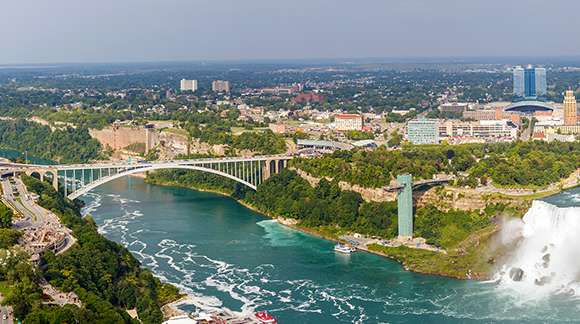New capability for global streamflow simulation uses data from world's rivers

Drinking, irrigation and energy production. These are just three uses for freshwater provided by rivers to the world's people. Understanding the rivers' flow is important, especially as water uses and sources change. As reported in the Journal of Hydrometeorology, a team led by scientists at Pacific Northwest National Laboratory coupled a newly developed river-routing model with an Earth system model, and the simulated streamflow compared favorably against the observed streamflow from more than 1,600 major river stations worldwide. They also found that the added complexity in the new model adopted in Earth system models improves the model's ability to capture the variability of the observed streamflow. This new feature allows it to represent human influence on the river systems.
The quality and quantity of freshwater is being increasingly affected by new demands on the system-not only increased demands for use, but changes in the climate. Drought, floods and changes in weather systems all affect freshwater supply. In many areas, rivers provide the majority of freshwater for important uses. Accurately simulating the ebb and flow of rivers is important for understanding and predicting changes in the river. The global river-routing model described in this study simulates water quantity but it forms the basis for modeling stream temperature, sediments and nutrients that can greatly affect rivers and water quality.
"Evaluating the global streamflow simulation is a major milestone before we take on the next challenges in modeling other aspects of the river system, because water quantity affects the energy and matter flowing in the rivers," said Dr. Hong-Yi Li, a PNNL hydrologist who led the study.
In this study, a physically based routing model, the MOdel for Scale Adaptive River Transport (MOSART), was coupled with the land component of Community Earth System Model (CESM) called Community Land Model. The gridded CLM-simulated surface runoff and base flow were provided to MOSART at the end of each time step, and MOSART routed the runoff across hillslope and through tributaries and main channels of the river network. One distinct feature of MOSART compared to the previous river transport model in CLM is that MOSART explicitly simulates through both space and time the variability of flow velocity. The team showed that simulating the spatial and temporal variability of river velocity is necessary for capturing the seasonal nature of streamflow and annual maximum floods.
The PNNL team collaborated with scientists from University of Maryland to develop a comprehensive global hydrography database at 7 different spatial resolutions, ranging from 1/16 to 2 degree resolutions. The team evaluated the simulated streamflow globally against the observations from 1,674 major river gauge stations worldwide and systematically examined possible sources of model biases, which can impact the range of answers in simulations. These included model structure complexity, atmospheric forcing and the human influences on streamflow reflected in the observed streamflow in regulated rivers.
The river-routing model has been added to CESM and the Department of Energy's new Earth system model called Accelerated Climate Modeling for Energy (ACME) to support a wide range of research.
PNNL researchers are testing the implementation of MOSART into CESM and ACME. The team has extended MOSART to simulate stream temperature representing the effects of reservoir operations. In addition, they are now extending MOSART to simulate how sediment, carbon and other nutrients move from the landscape through the rivers and into the ocean.
More information: "Evaluating Global Streamflow Simulations by a Physically-based Routing Model Coupled with the Community Land Model." Journal of Hydrometeorology 16(2): 948-972. DOI: 10.1175/JHM-D-14-0079.1
Provided by Pacific Northwest National Laboratory




















